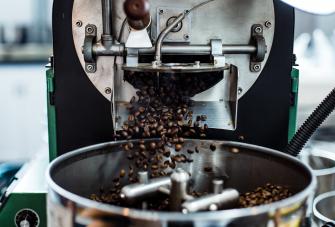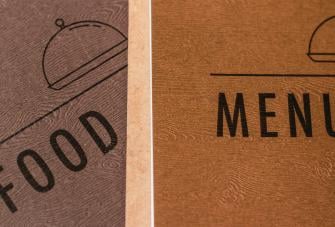Restaurant Complaints: How to Prevent and Handle Negative Feedback
Picture this: You've just had a long day at work, and you're craving a nice meal at your favorite restaurant. You sit down, order your food, and eagerly anticipate its arrival. But when your meal finally arrives, it's cold, undercooked, and not at all what you expected. You try to flag down your waiter, but they're nowhere to be found. Frustrated and hungry, you leave the restaurant feeling disappointed and dissatisfied.
Unfortunately, experiences like this are all too common in the restaurant industry. From food poisoning to poor service, customers have a laundry list of complaints that can quickly damage a restaurant's reputation. As a restaurant owner or manager, it's crucial to know how to handle these common complaints and prevent them from happening in the first place.
In this guide, we'll cover everything you need to know about handling customer complaints and preventing negative feedback. We'll discuss the most common restaurant complaints, including food quality issues and service problems. We'll also provide tips and strategies for preventing these complaints, such as setting clear expectations and training your staff effectively. Let's get started.
Types of restaurant complaints
As a restaurant owner or manager, it's important to understand the types of complaints customers may have. Here are some of the most common restaurant complaints you may come across.
Food quality issues:
Food quality is one of the most common restaurant complaints. Whether it's undercooked meat, cold fries, or a soggy pizza, customers expect their food to be fresh, hot, and tasty. Here are some food quality issues you may encounter:
- Undercooked or overcooked food
- Cold or lukewarm dishes
- Overly salty or bland food
- Tough or chewy meat
- Burnt or charred food
Service problems:
Service is another major factor in a customer's dining experience. A polite and attentive waiter can make all the difference, while a rude or inattentive one can ruin the entire meal. Here are some common service problems that lead to restaurant complaints.
- Long wait times for food or drinks
- Ignored or forgotten orders
- Incorrect orders
- Impolite or unhelpful staff
- Dirty or unclean tables
- Slow service
- Poor server hygiene
Atmosphere issues:
The atmosphere of a restaurant can also affect a customer's dining experience. A noisy or crowded restaurant can make it difficult to enjoy a meal, while a dirty or poorly-lit restaurant can be unappetizing. Here are some atmosphere issues you may encounter, leading to customer complaints.
- Too loud music or noise
- Poor lighting or temperature control
- Uncomfortable seating or table arrangement
- Unpleasant smells or odors
- Dirty or unclean restaurant
By understanding the types of restaurant complaints customers may have, you can take steps to prevent these issues and ensure a positive dining experience. In the next section, we'll discuss how to prevent negative feedback by setting clear expectations for your customers.
How to prevent negative feedback
Preventing negative feedback starts with understanding the most common restaurant complaints and taking steps to address them. Here are some tips for preventing negative feedback and improving your customers' dining experience:
Set clear expectations
Setting clear expectations for your customers is crucial to running a successful restaurant business. Customers want to know what to expect when they visit your restaurant, and they want to feel confident that they're getting their money's worth. You can avoid common restaurant complaints and ensure a positive customer experience by setting clear expectations.
For example, let's say your restaurant offers delivery services. To set clear expectations and ensure your deliveries arrive in a timely manner, you could:
- Set realistic food delivery times and communicate them clearly to your customers. This will help manage their expectations and reduce frustration if the delivery is delayed.
- Use a reliable delivery tracking system, like Epos Now Delivery, to monitor the progress of each delivery, even if orders come through from different channels. This will allow you to proactively address any issues that may arise during the ordering and delivery process and ensure that each delivery is made in a timely manner.
- Hire experienced and reliable delivery drivers who are familiar with your delivery areas and have a proven track record of delivering on time.
- Implement a system for managing multiple delivery orders simultaneously, such as using delivery management software. This will help you optimize your delivery routes and ensure that each delivery is made in the most efficient and timely manner possible.
Train staff effectively
Training your staff effectively is one of the most important steps in handling restaurant customer complaints and providing excellent customer service. When customers complain, your staff's response can either escalate or resolve the situation.
With proper training, your staff can turn a negative experience into a positive one for your customers. Here are some tips on how to train your staff effectively to handle common customer service complaints:
Teach your staff how to communicate effectively with customers and handle customer complaints.
- Train your staff on active listening skills to understand the customer's complaint and respond appropriately.
- Teach them how to apologize sincerely and take responsibility for the issue. This will prevent poor customer service.
- Train them to offer a solution or a compromise to resolve the issue, such as offering a replacement dish or a discount on the bill.
- Make sure they understand when to escalate a customer complaint to a higher staff level, and to pass on complaints to the relevant teams in a constructive manner, so that it doesn’t become a repeat issue.
For example, if you've received a customer complaint about a dish that was overcooked, your staff could apologize for the mistake, offer to replace the dish with a fresh one, and even offer a complimentary dessert as a gesture of goodwill.
Train your staff on conflict resolution and time management skills.
- Provide them with scenarios to practice handling difficult situations, such as dealing with an angry or upset customer.
- Teach them how to manage their time effectively so they can prioritize customer needs and handle multiple tasks simultaneously.
For instance, if you've got a customer complaint saying they're unhappy with their seating arrangements or are waiting too long for their food, your staff could calmly listen to their concerns, offer a solution, and provide regular updates on the status of their order.
Provide ongoing training and feedback to ensure that your staff is always improving.
- Offer regular training sessions to update your staff on new menu items, service standards, payment processing, and customer feedback.
- Provide constructive feedback to help your staff improve their skills and correct bad attitudes or behaviors.
By training your staff effectively, you can ensure that they are equipped to handle customer complaints and provide excellent customer service. This can help prevent negative feedback and build a loyal customer base for your restaurant business.
Run the restaurant you've always wanted
Our restaurant POS system has all the features you need to build the restaurant of the future.
Regularly evaluate and improve operations
To prevent customer complaints and negative feedback, it's important to regularly evaluate and improve your restaurant's operations. Here's how.
Use customer feedback surveys to gather feedback on your restaurant's food quality, service, and atmosphere.
- Offer customers the opportunity to leave feedback through surveys or comment cards.
- Use social media platforms and review sites to monitor customer feedback and respond to any negative reviews in a timely manner.
For example, if a customer complains by leaving a negative review online, you could quickly respond by acknowledging the issue and offering a solution, such as a replacement dish or a discount on their next visit. This shows that you take customer complaints seriously and are committed to improving their experience.
Monitor performance metrics such as table turnover rate, order accuracy, and staff performance.
- Keep track of how long customers are waiting for tables, how quickly their orders are being taken and served, and how well your staff is performing overall.
- Use this data to identify areas of improvement and implement changes to streamline your operations.
For instance, if you notice that customers frequently complain that their food arrived cold, you could evaluate your kitchen's food preparation and delivery process to identify improvements.
TIP: Additionally, utilizing technology such as a Kitchen Display System (KDS) or a restaurant POS system can help you monitor and analyze performance metrics more efficiently. These systems can track order times, identify bottlenecks in the kitchen, and even help with inventory management.
Analyze your competition to see what they're doing well and where you can improve.
- Research other restaurants in your area and take note of what they're doing well, such as their menu offerings, customer service, or marketing strategies.
- Use this information to improve your own restaurant's operations and differentiate yourself from the competition.
For example, if you notice that other restaurants in your area offer delivery services, and are getting a lot of good reviews, you could re-evaluate your delivery process to ensure that your food arrives hot and on time.
Regularly evaluating and improving your restaurant's operations can prevent common customer complaints and maintain a positive reputation. However, negative feedback can still occur despite your best efforts.
Interested in learning more about running a successful restaurant business? Check out our additional resources below:
Ready to take your restaurant to the next level? Speak to our POS experts today and discover how we can help streamline your operations.




